Wednesday, March 26, 2025
Advances in Mass Timber Manufacturing
Oregon Ballroom 202Moderator:

DNR Newberry Customer Service Center: Locally Sourced Mass Timber
The Michigan Department of Natural Resources (DNR) needed to build a new customer service center (CSC) serving the eastern Upper Peninsula of Michigan. This center would house multiple agencies within the DNR and also provide information on regional natural resources for visitors.
Lord Aeck Sargent and a team of researches successfully utilized Michigan-grown red pine for the cross laminated timber (CLT) panels shaping the roof and wall structure of the DNR Customer Service Center. The red pine lumber feedstock was supplied by a sawmill located in Michigan.
Together with its partners, the team demonstrated the potential of locally-sourced softwood species as a viable material for mass timber construction and a viable expansion for the timber industry in the state of Michigan.

Stress Skin Panels Kerto-Ripa for Floors, Walls, and Roofs: European Approach to Structural Gluing
Metsa Wood rib element systems route to market
Ripa types of applications:
- Roof
- Wall
- Floor
Reason for use:
- Rib-based hollow-core structures use less material and help in reaching the ever increasing sustainability targets and ESG requirements.
- Ready proven manufacturing technology with 30 years in the market. Easy entry for customers to the new markets and a clear reduction in R&D investment.
- High performance elements enable longer spans than conventional timber based EWP products, and provide the designers and building owners more space flexibility to the buildings.
Example cases will be explored.
Lessons learned:
- There needs to be a strong connection to the local building requirements and culture. One solution does not fit all. We have found a way to customize and find winning solutions for the final customers through the partner network.
- There is a clear need in the market for ready solutions that enable an easy entry to the mass timber market for new players.
- For the U.S. market, Kerto LVL products in beams and panels are ICC-ES certified, and can be used.
- Diversity of the proposed solution is a clear road to success.

Scaling Sustainable CLT Single-Family Homebuilding Through Modular Construction and Delivery Practices
Single-family and mass timber have been talked about for many years, but beyond bespoke, grand applications there hasn’t been a scaled effort to drive this development. Aera Systems is addressing this by combining a modular mass timber building system with a vertically integrated business model to rapidly and affordably deliver high performance housing.

Advanced Manufacturing Toward Accessible, Commodity Mass Timber
Advancing mass timber products takes a strong focus on the go-to-market requirements for new innovations. Michaela Harms has spent her career supporting national and international wood products and complementary product manufacturers’ understanding of what is needed to successfully roll out inventive products to the U.S. market.
As a moderator and panelist, Michaela will highlight the intersection of innovation, market development, engineering requirements, and standards compliance, and how this understanding continues to advance construction and keep mass timber on the cutting edge of the industry. Using speed and automation and complementing with DfMA/efficient design, the industry is driving toward accessibility and wider adoption. By streamlining production and optimizing material use, advanced manufacturing is making mass timber a more viable and scalable solution for modern construction, pushing the industry toward greater efficiency and sustainability.

Session CEUs: Course Description and Learning Objectives
Course Description
Innovations in sourcing, structural systems, and connection technology are driving mass timber construction forward as an efficient, cost-effective, and eco-friendly alternative to traditional materials. This presentation will highlight these innovations, detailing their benefits and strategies for application. Attendees will learn how the Michigan Department of Natural Resources (DNR) utilized Michigan-grown red pine for cross-laminated timber (CLT) panels to design their new customer service center, showcasing the benefits of locally sourced materials and expanding the state’s timber industry. Next, the session will introduce a leading innovative product—stress skin panels—using rib element systems, which offer high-performance, sustainable solutions for floors, walls, and roofs that reduce material use and provide longer spans for flexible building designs. Lastly, the presentation will highlight advanced timber connectors, which streamline installation, improve performance under various conditions, and integrate seamlessly with design software.
ICC:
Attendees will learn how the Michigan Department of Natural Resources (DNR) utilized Michigan-grown red pine for cross-laminated timber (CLT) panels to design their new customer service center, showcasing the benefits of locally sourced materials and expanding the state’s timber industry. Next, the session will introduce a leading innovative product—stress skin panels—using rib element systems, which offer high-performance, sustainable solutions for floors, walls, and roofsthat reduce material use and provide longer spans for flexible building designs. Lastly, the presentation will highlight advanced timber connectors, which streamline installation, improve performance under various conditions, and integrate seamlessly with design software.
Learning Objectives
- Understand the benefits of using locally sourced materials in mass timber construction to promote environmental and economic advantages.
- Identify innovative mass timber structural systems and understand how structural gluing technologies contribute to sustainability by using less material.
- Learn about advancements in timber connectors and their role in construction to improve installation, reliability, and performance.
- Recognize how mass timber is enhancing construction efficiency and sustainability outcomes through innovations in sourcing, structural systems, and connection technologies.
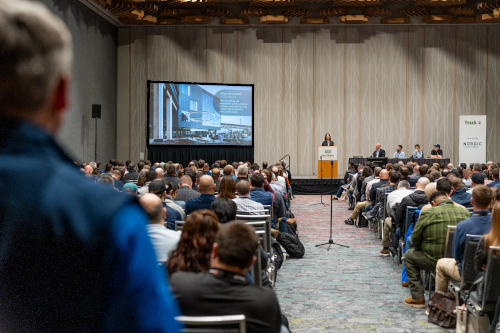 View the Agenda
View the Agenda
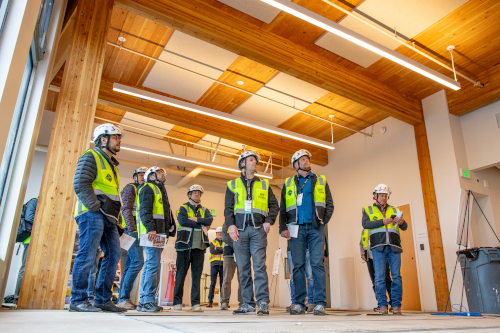 Book a Building Tour
Book a Building Tour
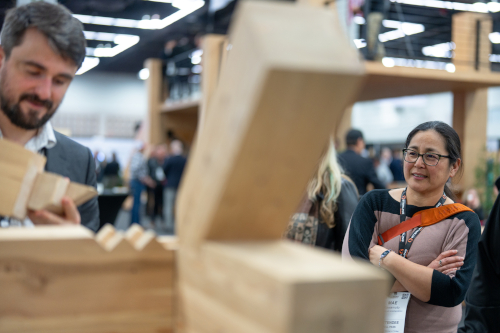 Book Your Exhibit Space
Book Your Exhibit Space
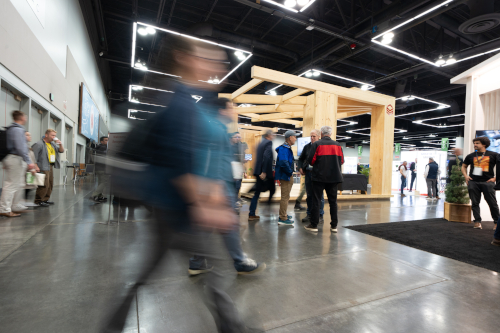 Explore the Exhibit Hall
Explore the Exhibit Hall
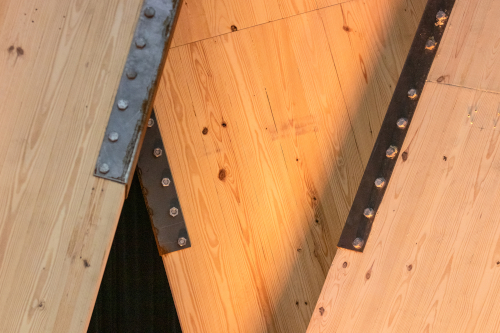 Become a Sponsor
Become a Sponsor
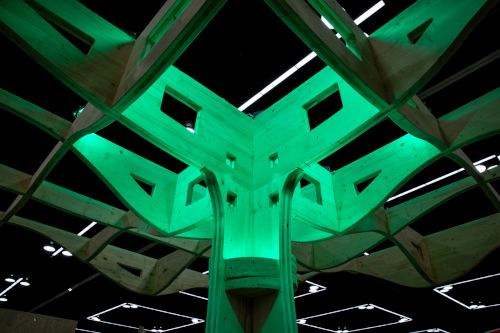 View Sponsors & Partners
View Sponsors & Partners
 Reserve Hotel Rooms
Reserve Hotel Rooms
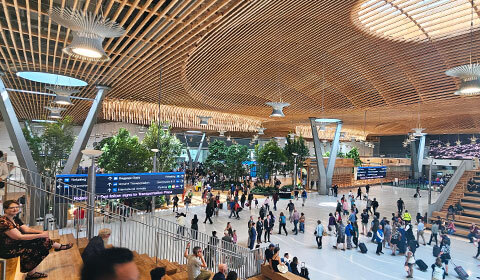 Discounted Plane Tickets
Discounted Plane Tickets
 Read Case Studies
Read Case Studies
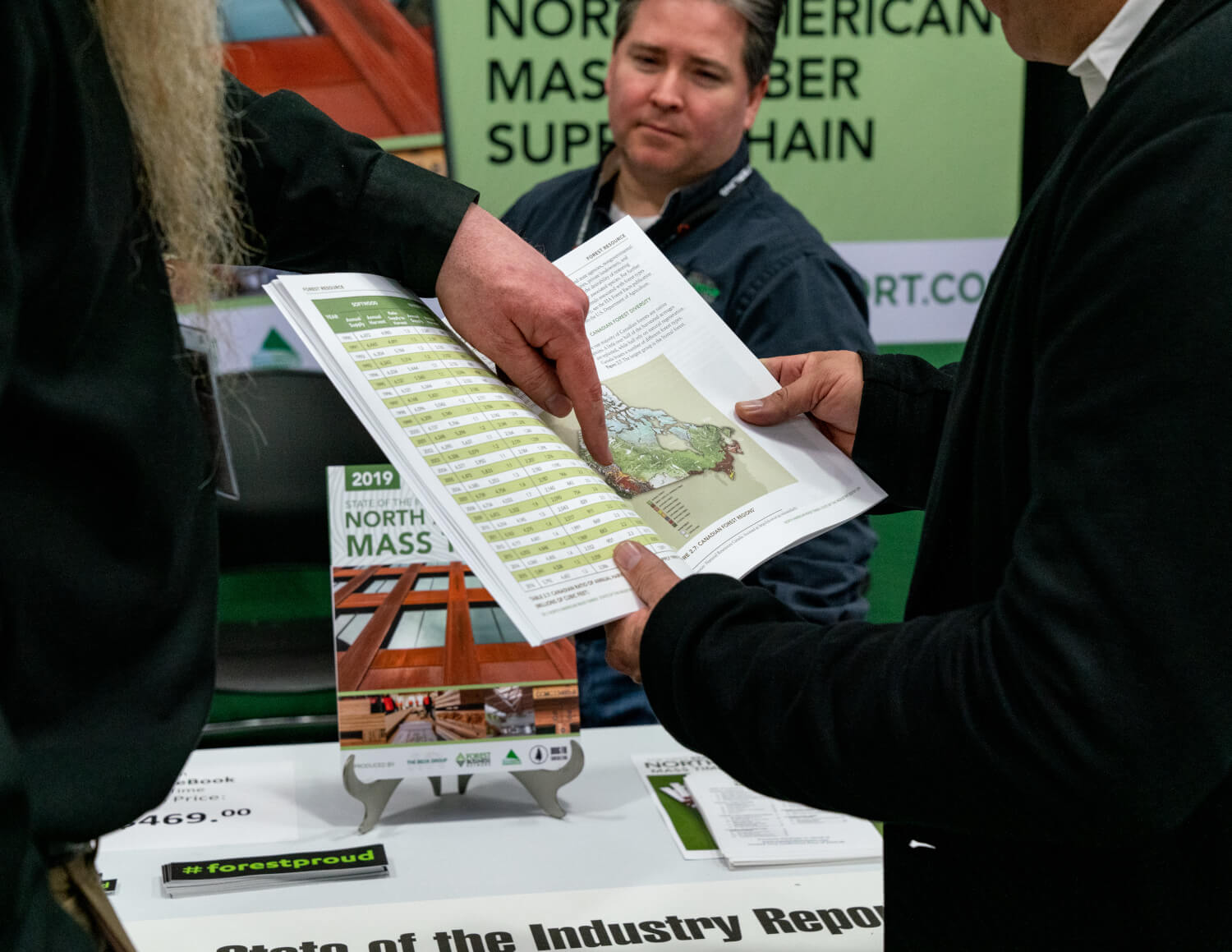 Purchase Past Reports
Purchase Past Reports
